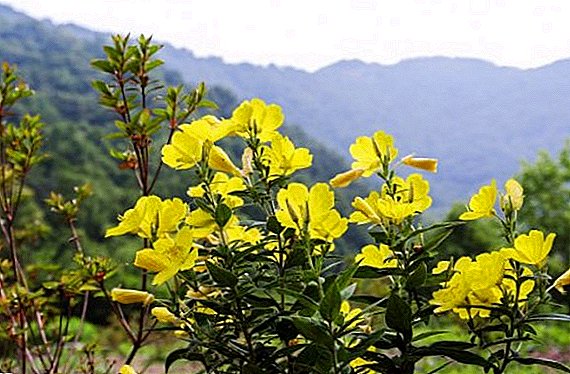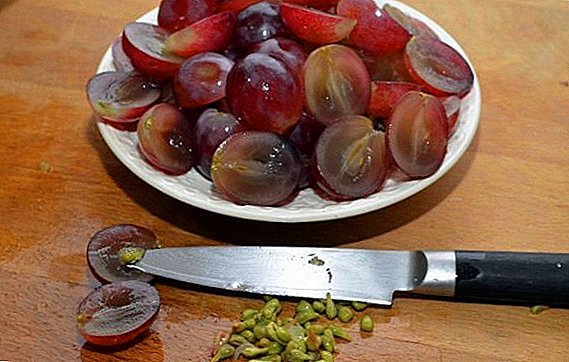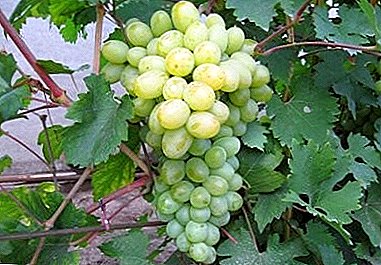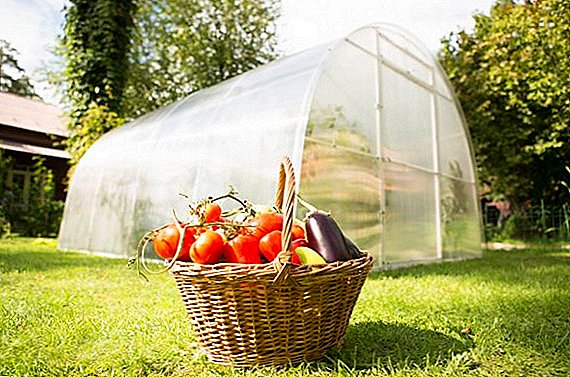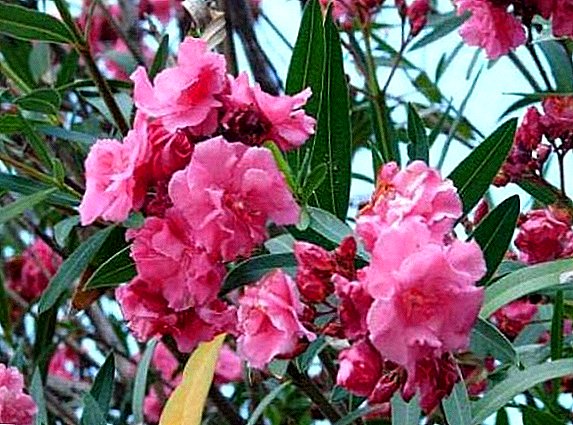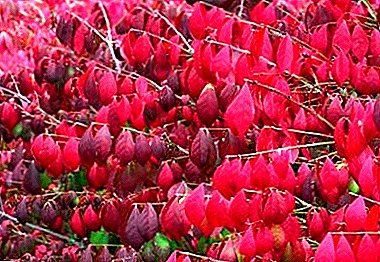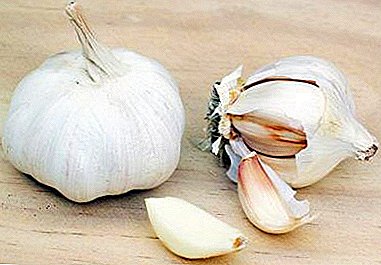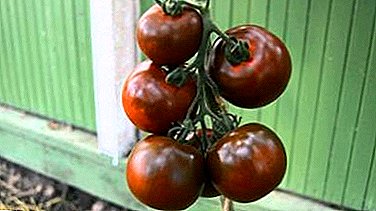
Aronian varieties of tomatoes like many, although a lot of opponents and unnatural color. Black color is given to fruits by a group of substances (anthocyan, etc.), which is responsible for the restoration of cells, rejuvenation of the organism as a whole. Black tomatoes contain more vitamins, specifically vitamin C, many times more than red fruit or yellow fruit.
In this article we will tell you about one of the wonderful black varieties of tomatoes Kumato. Read here the full description of the variety, get acquainted with its characteristics and growing features.
Kumato tomatoes: variety description
| Grade name | Kumato |
| general description | Mid-season indeterminantny grade |
| Originator | Europe |
| Ripening | 115-120 days |
| The form | Round or slightly oval, without pronounced ribs |
| Colour | Dark |
| Average tomato mass | 80 grams |
| Application | Universal |
| Yield varieties | 15 kg per square meter |
| Features of growing | Agrotechnika standard |
| Disease resistance | Resistant to major diseases |
 There is a lot of data on breeders who have received this variety, and they all differ. It is only known that European scientists (most likely - Belgian) cultivated the variety by crossing wild tomatoes from the Galapagos Islands with “domesticated” and adding blackberry-based pigment. The State Register of the Russian Federation "Kumato" was not included. Available cultivation throughout the territory of the Russian Federation and other countries. The most favorable southern regions.
There is a lot of data on breeders who have received this variety, and they all differ. It is only known that European scientists (most likely - Belgian) cultivated the variety by crossing wild tomatoes from the Galapagos Islands with “domesticated” and adding blackberry-based pigment. The State Register of the Russian Federation "Kumato" was not included. Available cultivation throughout the territory of the Russian Federation and other countries. The most favorable southern regions.
Kumato variety is known to gardeners all over the world, especially it is popular for growing in most European countries and Turkey. Indeterminate plant, more than 2 m high, usually pinch the top to reach 2 m, for favorable conditions for the development of the fruit. Stem resistant, bristly, liana-like, sredneoblichny. Brushes with fruits on the plant - from 8 pieces.
Rhizoma lushly develops in all directions by more than 50 cm, without deepening. Leaves of small size, dark green, "tomato" type, has a wrinkled surface without pubescence. The articulation is simple, intermediate - the first inflorescence is formed over 9 leaf, the next go with an interval of 1 - 2 leaves. Stem with articulation.
According to the time of ripening, “Kumato” is middle-ripening, closer to late, the harvest can be started 120 days after the sprouts of the seedlings. Resistant to major diseases of tomatoes. Cultivation is available in open ground and in greenhouses. In the greenhouse plants need to pinch.
Specifications
Up to 8 kg of beautiful, almost identical in size fruits can be collected from 1 bush.. With 1 sq. M. on average, collect about 15 kg.
It has a number of advantages:
- good harvest;
- high taste qualities;
- perfectly tolerate transportation;
- have resistance to heat;
- resistant to most common diseases.
Of the obvious flaws, only color is distinguished - not everyone likes it. Also noted minor single nuances.
You can compare the yield of a variety with others in the table:
| Grade name | Yield |
| Kumato | 15 kg per square meter |
| Crimson sunset | 14-18 kg per square meter |
| Inseparable Hearts | 14-16 kg per square meter |
| Watermelon | 4.6-8 kg per square meter |
| Giant Raspberry | 10 kg from a bush |
| Black Heart of Breda | 5-20 kg from a bush |
| Crimson sunset | 14-18 kg per square meter |
| Cosmonaut Volkov | 15-18 kg per square meter |
| Eupator | up to 40 kg per square meter |
| Garlic | 7-8 kg from a bush |
| Golden domes | 10-13 kg per square meter |
Features:
- the main feature is an unusual color;
- the same regular round shape of the fruit is also not common;
- the seeds germinate fairly quickly, then - growth slows down.
 Form - from rounded to oval, low-fin. Dimensions - about 5-7 cm in diameter, weight - from 80 g. The fruits are the same in size. The color of immature fruits is pale green without a spot on the stem, darkening begins with time, and the result is a chocolate (maroon) color with thin strips of green, sometimes without stripes.
Form - from rounded to oval, low-fin. Dimensions - about 5-7 cm in diameter, weight - from 80 g. The fruits are the same in size. The color of immature fruits is pale green without a spot on the stem, darkening begins with time, and the result is a chocolate (maroon) color with thin strips of green, sometimes without stripes.
The skin is dense, smooth, matte. The flesh is fleshy, superdense, but tender. It has a dark red, sometimes greenish color. There are few seeds, distributed in the correct lobes in 4 chambers. There are much more dry substances in dark fruits than in ordinary red ones, more than 5%. The harvest is stored relatively long, but it is better to use immediately. Transportation over long distances carries well.
Kumato black tomatoes have a great taste - sweet with a hint of fruit and berry, the aroma is amazing. First of all, the variety of tomatoes “Kumato” is intended for fresh consumption, it is considered to be a dessert variety. Suitable for cooking salads, soups, hot dishes. Canning tolerates well because of the high density of the fruit. Tomato paste and juice acquire an interesting unique taste. The taste and vitamins are not lost during heat treatment.
Compare the weight of fruit varieties with others can be in the table below:
| Grade name | Fruit weight |
| Kumato | 80 grams |
| Roma | 100-180 grams |
| Japanese truffle | 100-200 grams |
| Grandee | 300-400 grams |
| Cosmonaut Volkov | 550-800 grams |
| Chocolate | 200-400 grams |
| Spasskaya Tower | 200-500 grams |
| Newbie pink | 120-200 grams |
| Palenka | 110-135 grams |
| Icicle pink | 80-110 grams |
A photo
Tomato "Kumato": more variety of unusual tomatoes can be seen in the photo:


Recommendations for growing
Cultivation of dark fruit varieties, such as the Kumato tomato, is no different from other tomato varieties. Seeds begin to be planted in early March, pre-disinfecting them in a weak solution of potassium permanganate, washing with running water. Often use treatment solution to stimulate seed growth.
 The soil should be decontaminated and steamed from microorganisms. Planting occurs at a depth of about 2 cm with a distance between the seeds of 2 cm into fertile soil heated to 22 degrees in a wide container. Spill the soil with the seeds with warm, settled water and cover with plastic wrap or thin glass to form the desired moisture. Humidity promotes good germination of seeds.
The soil should be decontaminated and steamed from microorganisms. Planting occurs at a depth of about 2 cm with a distance between the seeds of 2 cm into fertile soil heated to 22 degrees in a wide container. Spill the soil with the seeds with warm, settled water and cover with plastic wrap or thin glass to form the desired moisture. Humidity promotes good germination of seeds.
Read more about the soil for seedlings and for adult plants in greenhouses. We will tell you about what types of soil for tomatoes exist, how to prepare the right soil on your own and how to prepare the soil in the greenhouse in spring for planting.
Put the container with the future seedlings in a warm (about 25 degrees) well-lit place. After the appearance of most shoots (approximately on the 5th day), the coating is removed. When 2 well-developed sheets appear, the seedlings are seated in separate containers - they dive. This contributes to a better development of the root system and the plant in the future. Carry out fertilizing seedlings with mineral fertilizers. Watering occurs as the soil dries, not frequent.
2 weeks before planting, the plants are hardened. In mid-May, it is possible to land in a greenhouse, in open ground - 2 weeks later, when strong cold weather is bypassed. Planted in the wells at a distance of about 50 cm from each other, in the wells should be put fertilizer with phosphorus. It is better to tie up the plants immediately to individual supports with synthetic materials. Watering, loosening and weeding - as needed.
Mulching is welcome. Top dressing - according to the schedule, mullein and other mineral fertilizers, (usually once in 10 days). The formation of a bush is not required, it grows into several stems, and the pinching is necessary for the lateral and lower shoots. In July, you can harvest.
 Read on our website: the most common diseases of tomatoes in greenhouses and how to deal with them.
Read on our website: the most common diseases of tomatoes in greenhouses and how to deal with them.What tomatoes are resistant to most diseases and resistant to late blight? What methods of protection against phytophthora exist?
Diseases and pests
The variety is resistant to major diseases, some can be avoided by disinfecting seeds and soil. However, prophylactic spraying against diseases and pests are necessary. Use drugs from specialized stores.
Tomato "Kumato": the beneficial properties of this variety are obvious, the fruit contains a lot of nutrients, and the taste of tomatoes will not leave anyone indifferent.
| Mid-season | Medium early | Late-ripening |
| Anastasia | Budenovka | Prime minister |
| Raspberry wine | Mystery of nature | Grapefruit |
| Royal gift | Pink king | De Barao the Giant |
| Malachite Box | Cardinal | De barao |
| Pink heart | Grandma's | Yusupovskiy |
| Cypress | Lev Tolstoy | Altaic |
| Raspberry giant | Danko | Rocket |



